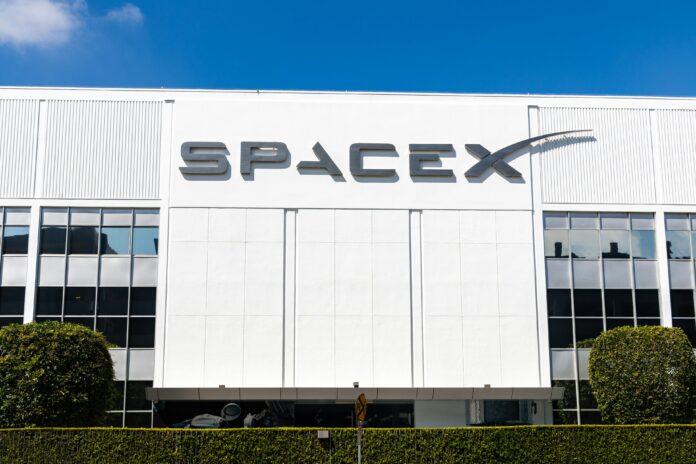The Polaris Dawn mission will see non-professional astronauts perform the first-ever spacewalk, marking a major advancement in commercial space exploration
On September 12, 2024, SpaceX’s Polaris Dawn mission is poised to make history with the first spacewalk conducted by non-professional astronauts. This groundbreaking event will take place as mission commander Jared Isaacman and crew member Sarah Gillis leave the safety of the SpaceX Dragon capsule and venture into the vacuum of space, over 400 miles above Earth.
The Polaris Dawn mission, which launched on September 10, 2024, aims to push the boundaries of commercial space exploration. Unlike traditional spacewalks conducted from spacecraft equipped with airlocks, this mission involves significant modifications to the Dragon capsule. Typically, airlocks are used to transition astronauts between the pressurized interior of the spacecraft and the vacuum of space, minimizing the risk of depressurization. However, the Dragon capsule lacks this feature, necessitating a redesign to accommodate the spacewalk.
To facilitate this unprecedented activity, SpaceX engineers have re-engineered the capsule to allow depressurization. The modifications include adjustments to the capsule’s fittings and computer systems, ensuring it can handle the transition to and from space. During the spacewalk, the remaining crew members inside the capsule will wear spacesuits to protect themselves from the vacuum.
Embed from Getty ImagesIsaacman, a billionaire entrepreneur and the primary financier of the mission is both leading and funding this ambitious project. His previous spaceflight experience, coupled with his drive to explore new frontiers, underscores the mission’s significance. “Whatever risk is associated with it, it is worth it,” Isaacman stated before the launch, reflecting his commitment to advancing commercial space exploration.
Sarah Gillis, a SpaceX employee and fellow crew member, will join Isaacman outside the capsule. The astronauts will exit through a specially adapted hatch in the Dragon’s nose, using handrails to navigate the narrow opening. They will be connected to life support systems via an umbilical hose, which will provide them with power, communications, and oxygen during their time in space.
The primary goal of the spacewalk is to test a new SpaceX spacesuit designed for enhanced mobility and temperature regulation. This suit, which is slimmer than the traditional bulky designs, features internal data displays on the helmet visor. The test aims to evaluate the suit’s performance in space and gather data to improve future designs.
The Polaris Dawn mission’s crew has undergone extensive training over the past two years, including simulations of zero gravity using ropes and pulleys. Despite the lack of access to traditional training facilities like underwater pools, the team’s dedication and innovative approach have prepared them for this historic spacewalk.
As private enterprises like SpaceX continue to break new ground in space exploration, the Polaris Dawn mission represents a pivotal moment in the evolution of commercial space travel. The successful execution of this spacewalk could pave the way for future private space missions and set new standards for spacewalk procedures and equipment.
Analysis
Political: The Polaris Dawn mission highlights the increasing involvement of private companies in space exploration, which may influence governmental priorities and funding in the sector. As private enterprises like SpaceX take on more ambitious projects, governments may need to reconsider their roles in space exploration and develop new regulations to address the growing influence of commercial actors. This shift could lead to new policies or partnerships between public space agencies and private companies, shaping the future of space travel and international space collaboration.
Social: The mission reflects a significant cultural shift in space exploration, making it more accessible to individuals outside traditional astronaut programs. By involving non-professional astronauts in a spacewalk, SpaceX challenges the exclusivity of space travel and encourages broader public engagement. This democratization of space could inspire a new generation of space enthusiasts and promote greater public interest in space exploration. The mission also demonstrates the increasing role of private entities in advancing space technology and innovation.
Racial: The Polaris Dawn mission features a diverse team of astronauts, including individuals from various backgrounds. This inclusivity reflects a broader trend in space exploration towards recognizing and utilizing a wide range of talent. As private space missions become more common, they may contribute to a more diverse representation in the field, challenging traditional notions of who can participate in space travel and fostering a more inclusive approach to space exploration.
Gender: Sarah Gillis’s participation in the Polaris Dawn mission underscores the growing presence of women in space exploration. Her role as one of the first non-professional astronauts to perform a spacewalk highlights the increasing opportunities for women in the field. As private space missions expand, they offer new platforms for women to contribute to and lead in space exploration, advancing gender equality in science and technology.
Economic: The Polaris Dawn mission represents a significant investment in commercial space technology, with potential economic implications for the space industry. By testing new equipment like the SpaceX spacesuit, the mission could drive innovation and create new business opportunities in the space sector. Success in this endeavour may attract further investment in space technology and commercial space activities, leading to market growth and new economic opportunities.
